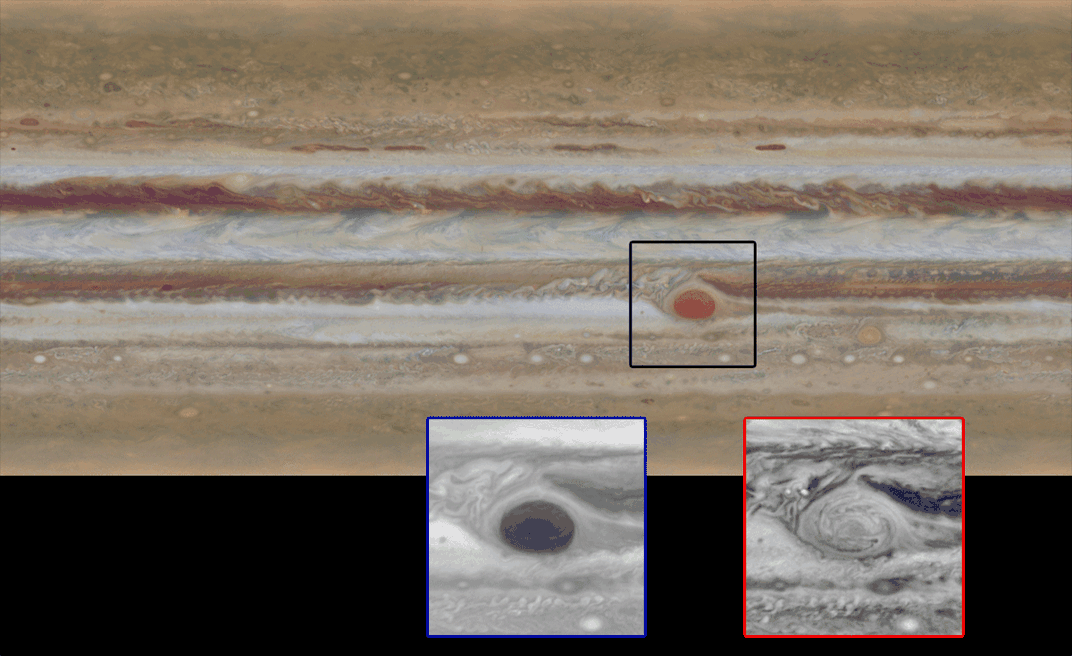High Definition Video of Jupiter Reveals New Weather in the Great Red Spot
Video portrait shows massive storm changing as it shrinks
Ever since it was first observed—almost 400 years ago—Jupiter’s Great Red Spot has spun without pause on the planet’s southern hemisphere. But as the enormous atmospheric storm slows down, it develops new features and weather patterns as seen in a new high definition video made from photos captured by NASA’s Hubble Telescope.
The Great Red Spot is like a massive hurricane, about three times the size of Earth, and has raged for a few hundred years. But as enormous as it is, the storm is finally dying down. Last year, NASA scientists announced that the Great Red Spot was shrinking at a rate of about 580 miles per year. Now, thanks to Jupiter’s new video portrait, NASA scientists have identified an unusual weather pattern emerging in the middle of the big red storm.
If you squint hard enough at the video, you can see what looks like a thin black string swirling about in the storm. As you can see in the animation below, this wispy strand shifts and spins with the storm over the 10 hours the Hubble photographed Jupiter:

As the storm changes shape and shrinks, new weather patterns are sure to develop among the 330 mile-per-hour winds. According to NASA planetary scientist Amy Simon, the filament could be an enormous band of clouds swirling around the storm’s center.
"[T]he stagnant region in the middle has gotten smaller over the years, so that may be affecting the region of high velocity winds that circulate around the interior of the Red Spot," Simon tells Kelly Dickerson for Tech Insider. "Once we know if the speeds have changed, we’ll know more [about] what this cloud band really means!"
NASA scientists also observed another odd weather pattern near Jupiter’s equator: A wave in the planet’s gases that has only been observed once before, during Voyager 2’s flyby in 1979, Sarah Fecht writes for Popular Science. The wave is similar to those that appear in the Earth’s atmosphere as a cyclone starts spinning.
“Every time we look at Jupiter, we get tantalizing hints that something really exciting is going on,” Simon says in a press release. “This time is no exception.”
This video is part of NASA's Outer Planet Atmospheres Legacy program, which will capture what is essentially a family portrait of the solar system. Neptune and Uranus have been imaged already, but are not yet available to the public. Hubble's next stop? Saturn.

